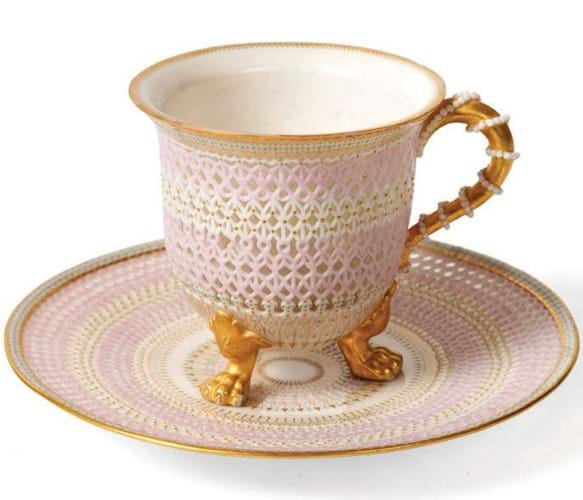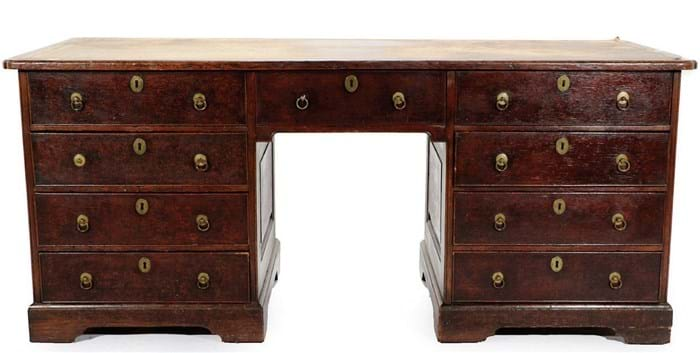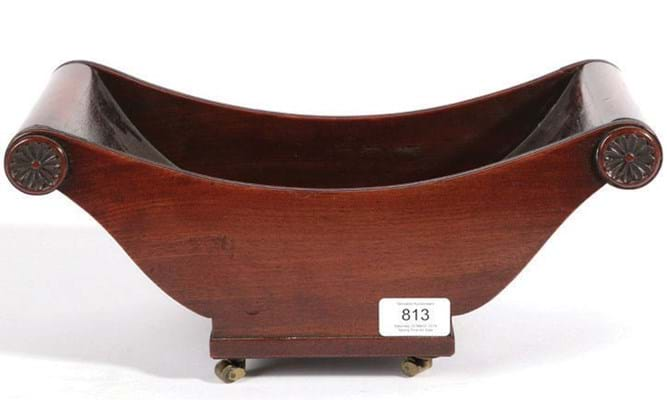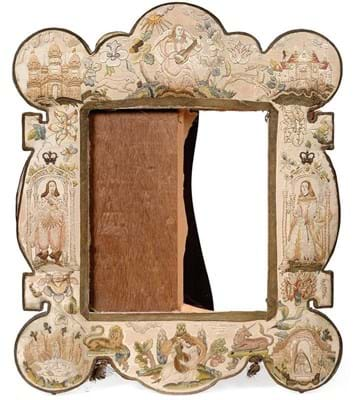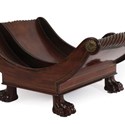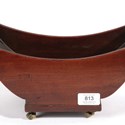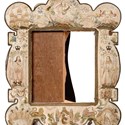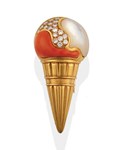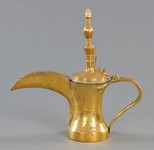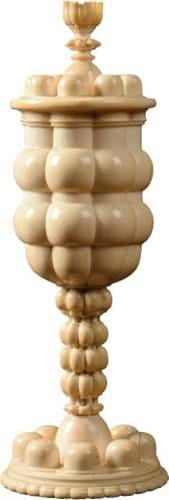
The 15¼in (39cm) tall pedestal cup and cover offered by Tennants (20% buyer’s premium) at the spring fine sale at Leyburn was such a piece.
Made in south Germany in the second half of the 17th century, it is a superb example of the lathe turner’s art with its distinctive hemispheres on the cover and foot. It would surely be deserving of ‘museum quality’ status.
Some flaws were evident, a 2¾in (7cm) section of the rim was broken and restuck and there was some age-related splitting throughout. Nothing to deter bidders, however, and, against a £5000-10,000 estimate it sold to the London trade at £32,000.
Canova Napoleon
Fine carving and intricate detailing were a feature of the March 23 sale.
A white marble ‘school of Canova’ bust of Napoleon as Mars Pacificus, derived from the colossal statue in the Duke of Wellington’s London home, Apsley House, went at four times expectations.
Antonio Canova’s (1757-1822) original was rejected by Napoleon because it was a nude. He then produced a bust (now in Chatsworth House, Derbyshire) that was then copied both at his Rome studio and in other workshops at Carrara.
Numbered 162 to reverse, Tennants’ 2ft 5in (74cm) high bust on a 4ft 4in (1.32m) marble column was estimated at £5000-7000 but sold to a UK dealer at £25,000.
Ceramics in the wide-ranging sale were led by a Kangxi (1661- 1722) mark and period dish which doubled expectations in selling to a Continental dealer at £28,000.
Measuring 13in (32cm) across, it is incised and painted to a green ground with an aubergine dragon chasing the flaming pearl with further dragons to the border and the exterior. According to the regulations governing members of the imperial household, drawn up under the emperor Qianlong (1735-96), dishes of this green and aubergine type were specifically assigned to the Fifth Rank Concubine.
This piece was in good condition, with only a small faint hairline to count against it.
The pair to the dish that followed was in rather poorer condition: two large sections of the rim had been broken and restock with some some sections missing. It sold at £2000.
The best of the UK porcelain was an example of the reticulated pieces George Owen made for Royal Worcester. Dated c.1876, the cabinet cup and saucer, pierced with honeycomb bands picked out in pink and ivory within turquoise and gilt jewelled borders, was pitched at £2000-3000 and sold to a UK collector at £4000.
Desk surprise price
Best of the furniture was one of the surprises of the day: a mid-18th century oak pedestal desk measuring 6ft (1.82m) wide. An honest survivor retailing original brasswork, against a £400-600 estimate it took £8500 from a dealer.
The sale also provided an example of what bidders judge to be the best and the rest: two early 19th century mahogany cheese coasters each going to by private buyers.
One, boat-shaped with scroll handles on a 14in (35m) wide plinth with castors, was estimated at £150- 250 and took £420.
The other had part wrythen turned handles and carved paw feet with recessed castors. It had a crack to the 18in (45cm) base but was generally in good condition and against a £250-350 estimate sold at £5000.
A Stuart needlework mirror frame estimated at £3000-5000 sold to a UK dealer at £6500. Standing 2ft 4in (70cm) tall, the motifs, typically taken from contemporary printed patterns, included Charles I and Queen Henrietta with musicians, animals, flowers and buildings.


